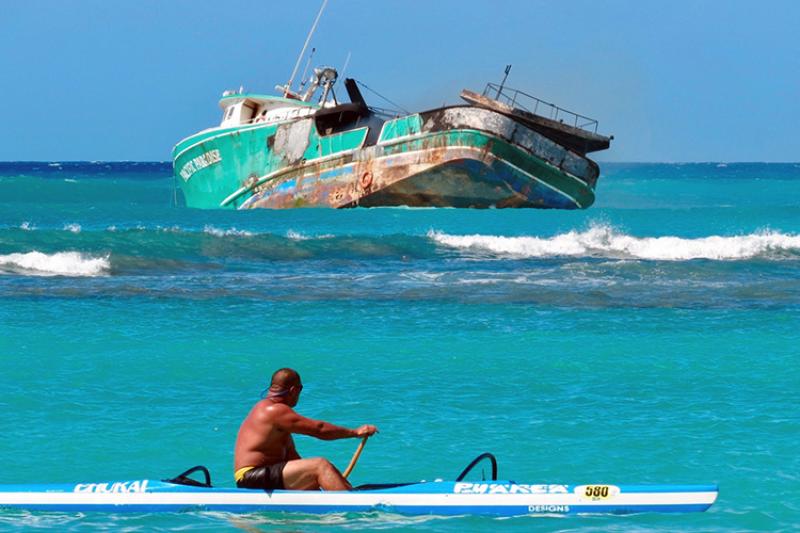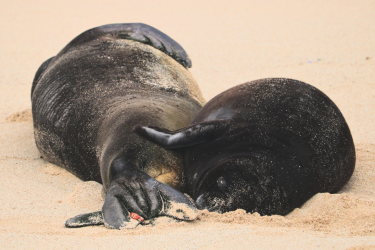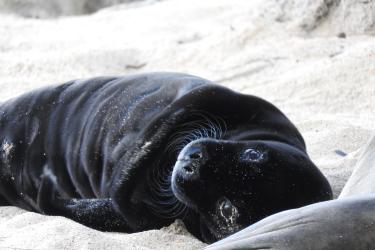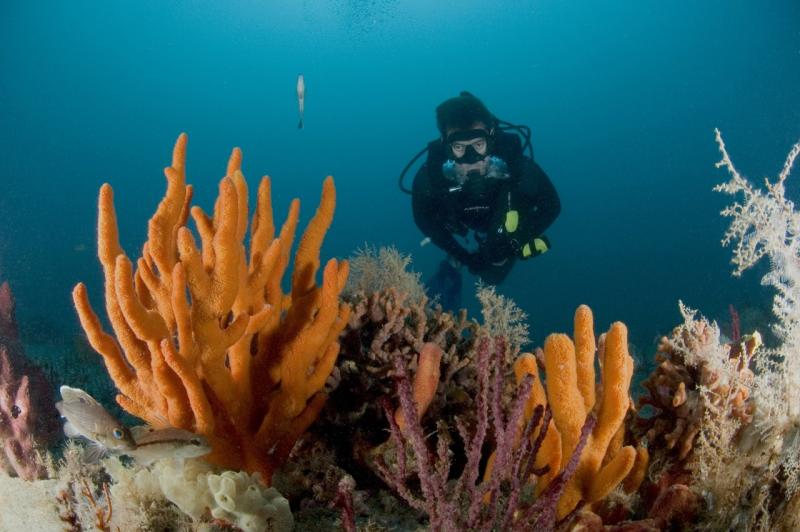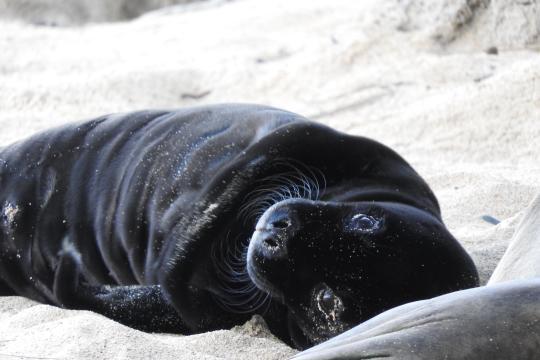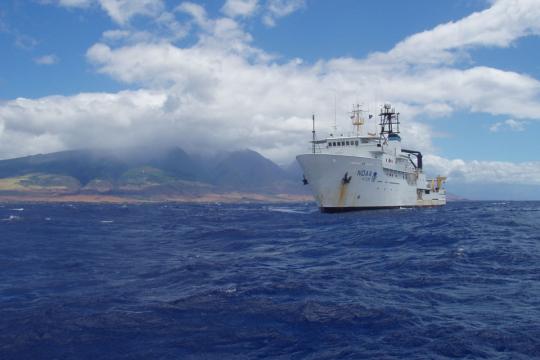On October 10, 2017, a 79-foot commercial fishing vessel ran aground nearly a quarter of a mile off Kaimana Beach in Waikīkī, Oʻahu. The 109-ton ship, which was transporting international crew members to other longline fishing boats, wedged into a reef outcrop in water just six to eight feet deep.
The vessel, Pacific Paradise, was unable to escape, and the concern from the public in the Pacific paradise of Hawaiʻi was palpable.
During the summer just a few months earlier, a female Hawaiian monk seal gave birth on Kaimana Beach. The mom-and-pup pair—commonly known as Rocky and Kaimana, respectively—quickly catapulted to international fame thanks to the high-profile location and 24-hour news video feeds.
While Kaimana was no longer in the area at the time of Pacific Paradise's accident, Rocky was, along with another seal known as Kaiwi. An oil spill from the ship could harm not only these highly endangered seals, but also various other species in the area, such as sea turtles and seabirds. Though unlikely, it could also enter the intake pipes of the Waikīkī Aquarium or damage the adjacent Waikīkī Natatorium War Memorial, one of the few World War I memorials in the country.
The U.S. Coast Guard (USCG) sprang into action, working closely with a number of partner agencies, including NOAA, the Hawaiʻi Marine Animal Response (HMAR) volunteer network, Hawaiʻi Department of Health, U.S. Fish and Wildlife Service, Hawaiʻi Department of Land and Natural Resources, Honolulu Ocean Safety Services, U.S. Environmental Protection Agency, and others.
Removing Pacific Paradise was no easy feat, and the task involved a fair share of surprises. But after nearly two months of constant communication and collaboration, careful planning (and re-planning when unexpected events occurred), and cautious efforts, the partnering agencies freed the vessel from the reef and sank it in deeper waters on December 7, 2017.
"This was probably one of the best examples of successful partnering between different agencies in the Pacific Region," says Matthew Parry, a fishery biologist with the NOAA Restoration Center and the Damage Assessment, Remediation and Restoration Program, who helped advise USCG during the response efforts. "It showcased the ability for state, federal, and local partners to smoothly and effectively respond to and deal with incidents like vessel groundings."
To those not involved with the grounding response, the ordeal may have appeared drawn-out and unnecessarily long. But thanks to the cautious and methodical approach of USCG, State of Hawaiʻi, NOAA, and others, Pacific Paradise left the public's eye without significant or lasting injury to natural resources.
Being Prepared
The success of the response all came down to being prepared and having an organizational framework in place to streamline and optimize operations.
When an oil spill (or potential oil spill) occurs, USCG and other response agencies usually adhere to a structured and organized management approach called the incident command system (ICS), says Ruth Yender, a scientific support coordinator in the NOAA Office of Response and Restoration's Emergency Response Division.
In short, the ICS combines all facets necessary for an effective disaster response—from equipment to personnel to communications—under a common organization structure, allowing agencies to better share resources and coordinate actions.
Originally developed in the 1970s to combat devastating forest fires, the ICS is organized into four functional parts under a unified command: operations, planning, logistics, and finance and administration.
"The ICS is very good at making sure everybody knows what the situation is to the maximum extent possible," Yender says, adding that a disaster response can be very decentralized without ICS.
In the case of Pacific Paradise, the ICS allowed numerous involved parties to remain in the loop at all times and provide input when necessary.

Honolulu Ocean Safety Services was one of the many partners involved in the Pacific Paradise response.
For instance, David Schofield and Aliza Milette-Winfree of NOAA Fisheries' marine mammal response team provided USCG command with daily updates regarding the whereabouts of the monk seals, on which the volunteer network kept close watch. "This situation required HMAR to provide significant volunteer and staff resources so that monitoring of nearby beaches could be maintained from sunrise to sunset throughout the event," says HMAR president Jon Gelman.
And USCG, in turn, updated NOAA Fisheries about their upcoming response activities.
"The reason we needed to know their daily plans was to understand whether their activities might incur an increased risk to marine animals, including Hawaiian monk seals, which regularly use that area," says Milette-Winfree, a marine mammal biologist with the NOAA Fisheries Pacific Islands Regional Office (PIRO).
If certain activities could potentially release fuel or marine debris into the water, NOAA Fisheries may have needed to capture and hold the seals until the danger had passed. "HMAR had volunteers and staff monitoring the beach every single day of the event and our NOAA response team was at the ready to be there within 10 to 20 minutes during days where removal activities had increased risk," Milette-Winfree says.
Yender, on the other hand, forecasted the spread of a potential oil spill using computer models, which take into account variables like wind, ocean currents, and ocean temperature.
Other experts supplied additional consultations.
"I acted as a kind of technical assistant to the Coast Guard," says Randy McIntosh, an endangered species biologist with PIRO. "I let them know what species were there in the area and how the things they were proposing might affect the species and their habitat."
Under the Endangered Species Act, federal agencies must undergo such "Section 7 consultations" to ensure that the activities they carry out (or authorize or fund) don't jeopardize the existence of any threatened or endangered species. However, given that the Pacific Paradise grounding was considered an emergency situation that could cause imminent loss of life or property, USCG didn't need to wait for approvals to implement their response activities.
"But they were listening to everything we said and they made every attempt to minimize or avoid adverse effects [on the species]," McIntosh says. "It was a phenomenal amount of cooperation and communication between the Coast Guard and other agencies."
This collaboration was especially crucial when things didn't go according to plan.
Trials and Triumphs
When Pacific Paradise initially grounded, USCG worked with salvage companies to lighten the vessel so that it could be towed off the reef. Within a few days, they had removed all but 1,500 gallons of fuel from the ship.
They attempted to tow the ship during high tide, but the tow lines snapped. Twice.
Then, the ship caught fire. Gasoline used to fuel a dewatering pump splashed on the vessel's hot surface and ignited, forcing salvage crew to quickly abandon ship.


A Fire Department helicopter pours water onto Pacific Paradise to put out a sudden fire.
USCG acted quickly to avoid an explosion of the ship's fuel — they dumped water onto the ship from Fire Department helicopters, dousing the flames. But this action not only lodged the ship more firmly into the reef, it also knocked debris into the water, in particular a mass of fish hooks and fishing gear.
While the fishhooks and gear were inconsequential to the overall recovery efforts, McIntosh and others from NOAA recognized the danger the debris posed to sea turtles and monk seals. USCG subsequently followed NOAA's suggestion and quickly removed the debris before continuing other operations.
Throughout the rest of October following the fire, USCG and salvage experts sought to tow the ship from the reef, but their attempts were either unsuccessful or thwarted by weather and waves.
Another issue, Parry says, was that the tugboats were also responsible for bringing container ships carrying food and other goods to shore. "There wasn't an unlimited amount of resources," he says.
By early November, USCG reclassified the vessel as sunken and fixed to the reef instead of grounded. It was clear that tugging at the boat in its current state would never be effective and dismantling it where it stood wasn't a good option either, since cutting the ship apart could potentially release fuel and debris into the water.
They devised a new plan: Fill the ship with buoyant polyurethane foam to help refloat it, and then drag it off the reef and sink it in deeper waters at a site approved by the Environmental Protection Agency.
Initially, McIntosh says, NOAA was concerned about the foam and wondered if it could eventually break apart in the water after the ship is sunk, becoming toxic to marine animals.
But from discussions with experts, they learned that the foam becomes inert once it sets (it doesn't dissolve or break down in water); and as it sinks into deeper water, it compacts to the point where it's unable to break up and float away from the vessel.
A Different Kind of Response
In the weeks that followed, USCG and contracted salvage crews worked diligently to make this plan a reality.
They removed two tons of steel plates and spare tools from the ship using commercial helicopters. They detached the rudder to further lighten the vessel and prevent it from dragging against the reef. They patched the numerous holes in the hull and pumped water out of the fish hold and water storage tanks.
Throughout this arduous process, the excitement rarely ceased.
The Hawaiʻi Division of Conservation and Resource Enforcement and USCG maintained periodic security and perimeter patrol to protect recreational ocean users from harm, and Ocean Safety provided public alerts on the beach to warn swimmers of any safety concerns.
At one point, salvage workers discovered fuel leaking from several hull breaches. But experts calculated the leak to be of an inconsequential amount.
Later, a red, smelly substance spilled out of a non-fuel tank that crew were trying to pressurize. A Kaimana Beach lifeguard who was surfing near the vessel during his lunch break reported a large red sheen on the water, as well as a heavy diesel smell and rainbow sheen in the waves. But the spill likely was paint or rust (it was not a petroleum-based product), and Yender's forecasts showed there'd be little issue back on the shore.
Though ship groundings typically generate a fair amount of worry due to potential oil spills, the Pacific Paradise incident was a somewhat unusual case given the high level of concern for the Hawaiian monk seals, Yender says. "Even if there was only a small release of oil, if a monk seal had been affected it would have been a significant impact," she says.
Thankfully, this didn't occur.
In early December, salvage experts were able to float Pacific Paradise, which was then towed off the reef that held it for nearly two months. They brought the ship to a federal site that's 13 miles offshore and sank it in waters 1,800-feet deep by refilling the tank airspaces they had previously pumped out.

The U.S. Coast Guard sank Pacific Paradise 13 miles offshore after the vessel was grounded for nearly two months. Courtesy of USCG.
Overall, the response contrasts a 2015 incident, in which a 95-foot tugboat named Nalani sank off Barbers Point with 75,000 gallons of diesel fuel, requiring NOAA to quickly remove monk seals from the Waiʻanae coastline and hold them at NOAA’s monk seal facility at the Inouye Regional Center on Ford Island. During the incident, there was inefficient communication and coordination between activities and agencies, which led to financial and administrative issues after-the-fact, says PIRO marine mammal response program coordinator David Schofield.
With Pacific Paradise, "NOAA communicated the concerns for monk seals and sea turtles in the first days of the incident," Schofield says. "Subsequently, the Coast Guard stayed in very close communications throughout the duration, partly as a result of lessons learned from the Nalani tugboat spill."
But Pacific Paradise was also a teachable experience, particularly in regards to marine mammal response.
"It provided us with an extended training scenario," Milette-Winfree says. "We were able to build more capacity within our own response team and with our partners. It also strengthened our relationship with the Coast Guard and gave them a better understanding of what our needs are in these types of scenarios."
Schofield echoes this sentiment: "This was a good drill for all involved and provided lessons for future interagency responses."
The incident may also prove to be insightful to the public.
"My hope is that the public comes away with some kind of relief and knowledge that when issues like this occur, they will be well-managed to avoid and minimize damages," McIntosh says.
"Everybody did everything they could to fix the problem," Parry says. "Vessel groundings are unpleasant, but the fact that it got off [the reef] with a minimum amount of resource injury is a good thing."
